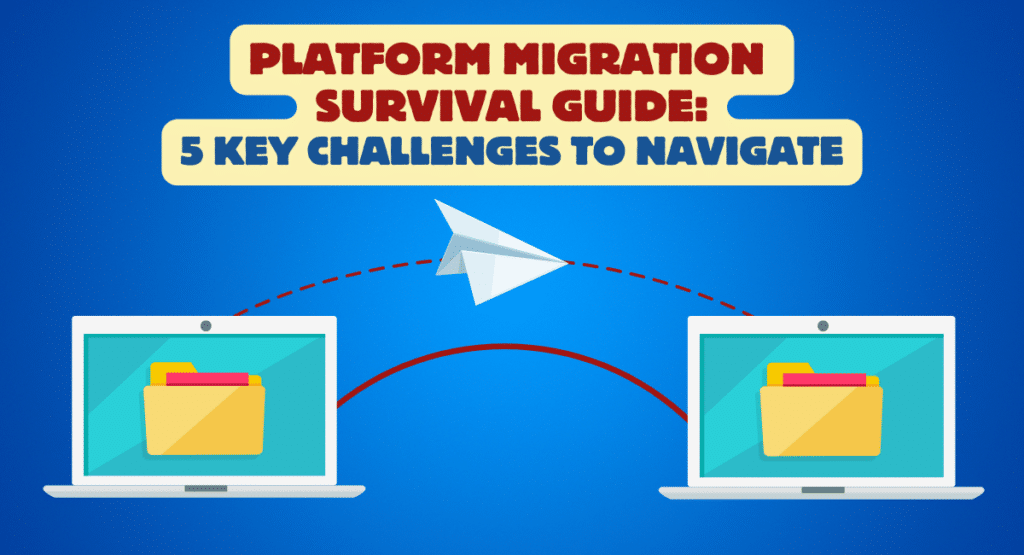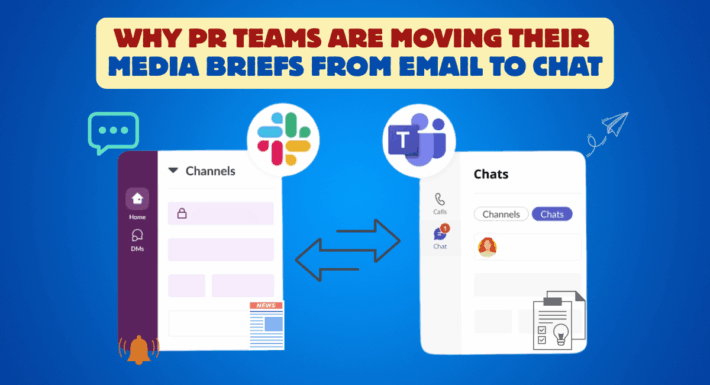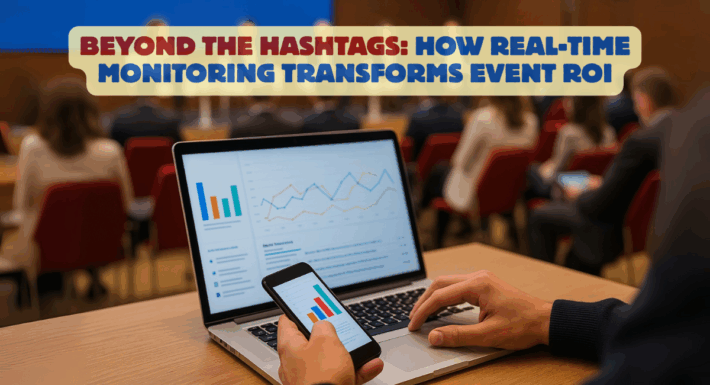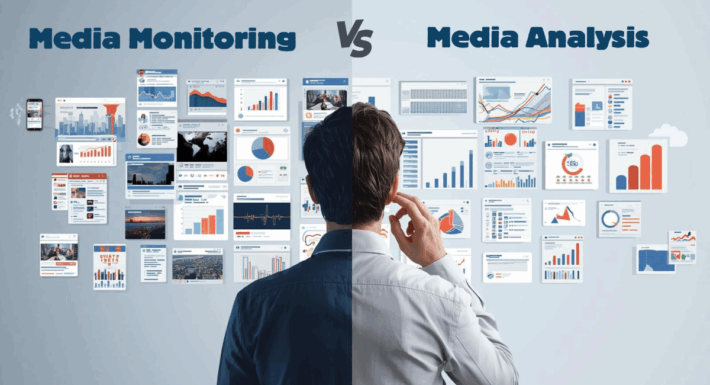Platform Migration Survival Guide: 5 Challenges to Navigate If Your Media Monitoring Provider Makes a Switch

The art and science of media monitoring and analysis are always changing. But one constant remains: Migrating from one platform to another can be difficult and challenging, and can be bad for productivity unless it’s done right.
After all, whether you’re happy with your media monitoring provider or not, a forced migration to a new platform can be an awkward slog. But if you follow our tips on navigating a media monitoring platform migration below, it doesn’t have to be.
Ready to fill your toolbox and migrate like a pro? Let’s do it.
Table of Contents
- How to Navigate a Forced Media Monitoring Platform Change
- Fullintel Will Never Ask You To Switch Platforms
How to Navigate a Forced Media Monitoring Platform Change
Software migrations aren’t easy, especially when they’re forced. Most of us are busy; there’s not a lot of time to learn new platforms and user interfaces (UIs). And software migrations of any kind never go 100 percent right.
The only real positive? If your provider forces you to switch platforms, it’s a great time to re-evaluate if you want to stay with that provider (since you’re being forced to switch platforms anyway, it’s an ideal time to make a change).
However, customers can take steps to ensure a smooth migration. Here are five of the biggest challenges associated with switching platforms, and you can alleviate them.
Data gaps and historical data loss
This can occur with every platform or vendor change but can be especially irritating if you hadn’t planned on switching platforms but your vendor forces you to do it anyway.
The data gaps that can emerge from such a switch can make benchmarking media data from past quarters or years extremely difficult (and in some cases, impossible). Brass tacks, it means starting from zero again.
Further, because some platforms allow clients to add custom fields and metadata and others don’t, this can also mean losing the ability to track custom pieces of metadata that may be invaluable to your media measurement program. All that carefully evaluate earned, or syndicated data as an example.
How to deal with it: You can always maintain your own database of media data as an insurance policy against catastrophic data loss on your provider’s end.
A proactive (and less labour-intensive) way to prevent data loss is to ensure your provider allows you to pull large datasets via CSV or Excel downloads. These CSV files containing your historical media data can then be uploaded into the new platform or handed to an analysis team for review.
While you’re at it, make sure your new platform is flexible and customizable enough to handle any custom metadata fields you’ve used in the past. It could be the difference between generating powerful insights and flying blind.
A steep UI learning curve
We hear versions of this all the time: “There are some great new features, but the benefits are lost because the user experience and visual organization is so chaotic and hard to navigate.”
Even if your new platform’s UI isn’t difficult to navigate, changing platforms inevitably leads to additional training, tutorials, and troubleshooting sessions to get your team (and any other stakeholders) up to speed. The cost of switching is born here and can be a huge drain on productivity, especially if you’re unprepared. Plan for this time.
How to deal with it: Select a platform with a clean, easy-to-navigate UI that doesn’t leave you confused every time you log in. Easier said than done when UI changes dramatically mid-contract and even worse when you’re moved to a harder-to-use software.
That’s why it’s important to ask questions early and often, sign up for instructional webinars as soon as possible, and generally engage your provider as much as necessary.
After all, the squeakier the wheel, the more support you’re likely to get. So ask your questions quickly, ask them repeatedly, and ask them until you get your answers. While this won’t completely alleviate the disruptions caused by forced migration, it’ll help you get through it with minimal collateral damage.
Disrupted Boolean string and search management
Some platforms are night and day when it comes to how they search for content—some use semantic search, others use Boolean, and still others use conflicting Boolean methodologies.
And an unprepared, and relatively sudden, change in search methodologies can add up to major productivity challenges.
How to deal with it: Ensure your provider has good documentation about the differences in search methodologies and how they could affect searches going forward. If you’re going to a new platform with a slightly different Boolean implementation, you’ll need to get yourself up to speed in a hurry. Ask your provider for a guide regarding the differences in searches, and ask for a plan related to your search migration. When will it happen, who is testing the searches when can your team provide feedback or “user acceptance testing”.
If your new platform uses semantic search and you’re used to Boolean, make sure it’s powerful enough to capture the information in the manner you need. Ask your vendor to prove how those searches work and that they’re equal, or at least comparable, to what you’ve been using.
Disrupted workflows and lost custom templates
Switching platforms often means losing custom designs, report templates, and any other customizations you’ve built up over the years. You’ll need to either rebuild them, or rebuild them differently—a potential disaster if those templates need to go through multiple approvals.
How to deal with it: Perform a proactive business evaluation to ensure your new platform can provide the same customizability as your previous option. If not, you’ll need to determine if the costs of your forced migration outweigh the benefits (and whether you should just switch providers altogether).
If the new platform can accommodate your customizations, you’ll additionally need to plan around the amount of time you’ll need to re-do (and get approval around) all your custom templates. If you don’t budget that time appropriately, you’ll find yourself quickly running out of it—or having to pay for extra customer support.
Overwhelmed customer support teams
Speaking of customer support, one element of mass customer migrations that doesn’t get brought up enough is that it often becomes a bottleneck as large numbers of customers are migrated simultaneously. That means it can be difficult to get adequate support precisely when you need it most.
It’s also possible that your new platform simply doesn’t come with the support resources you’ve come to expect.
How to deal with it: Be proactive. Engage in the process as much as you can; read up on the new platform’s features; and ask for documentation, feature walkthroughs, and any additional demonstrations you need.
But most importantly, make sure your provider will honor whatever support you’re entitled to in your service-level agreements (SLAs). To be brutally frank, if your provider’s customer support team is overwhelmed because of a hurried migration, it’s their problem—not yours.
Fullintel’s support team is available 24/7 and our SLAs always include a 15-minute response time for client support, no matter what.
Fullintel Will Never Ask You To Switch Platforms
Migrating media monitoring platforms can be a challenge, especially if it’s a forced migration. But there are ways to stay ahead of any disruptions by being proactive, asking your provider hard questions, and evaluating the new platform to ensure it meets your team’s needs.
And you’re being forced to migrate platforms anyway, then why not take the time to evaluate everything—including staying with your current provider?
Fullintel will never ask you to migrate software platforms because we’ve built the Fullintel Hub customizable media monitoring platform using a modular approach. That means we’re able to bolt on new capabilities and features without needing to build a whole new platform.
If you’re being asked to change your platform, your view, your data, your customizations, and nearly everything else, then now is the time to evaluate your provider as a whole—and evaluate other platforms like Fullintel, too.
Contact Fullintel today to set up a 30-minute, interactive demo.
Not quite ready for a full demo? Try us out with a free, customized executive news brief based on your actual media coverage.
Jim Donnelly is a former journalist and content marketing and communications consultant who works with clients across a range of industries, including mobile technology, IT security, enterprise IT consulting, and media monitoring and intelligence. His previous roles have included Chief Media Officer at Canada’s largest IT and technology association, a director at a major media intelligence firm and, prior to that, editor-in-chief at a regional business publication.



